Loading AI tools
Stratified complex society From Wikipedia, the free encyclopedia
A civilization (also spelled civilisation in British English) is any complex society characterized by the development of the state, social stratification, urbanization, and symbolic systems of communication beyond signed or spoken languages (namely, writing systems and graphic arts).[2][3][4][5][6]


Civilizations include features such as agriculture, architecture, infrastructure, technological advancement, currency, taxation, regulation, and specialization of labour.[5][6][7]
Historically, a civilization has often been understood as a larger and "more advanced" culture, in implied contrast to smaller, supposedly less advanced cultures.[8][9][10][11] In this broad sense, a civilization contrasts with non-centralized tribal societies, including the cultures of nomadic pastoralists, Neolithic societies, or hunter-gatherers; however, sometimes it also contrasts with the cultures found within civilizations themselves. Civilizations are organized densely-populated settlements divided into hierarchical social classes with a ruling elite and subordinate urban and rural populations, which engage in intensive agriculture, mining, small-scale manufacture and trade. Civilization concentrates power, extending human control over the rest of nature, including over other human beings.[12]
The word civilization relates to the Latin civitas or 'city'. As the National Geographic Society has explained it: "This is why the most basic definition of the word civilization is 'a society made up of cities.'"[13] The earliest emergence of civilizations is generally connected with the final stages of the Neolithic Revolution in West Asia, culminating in the relatively rapid process of urban revolution and state formation, a political development associated with the appearance of a governing elite.
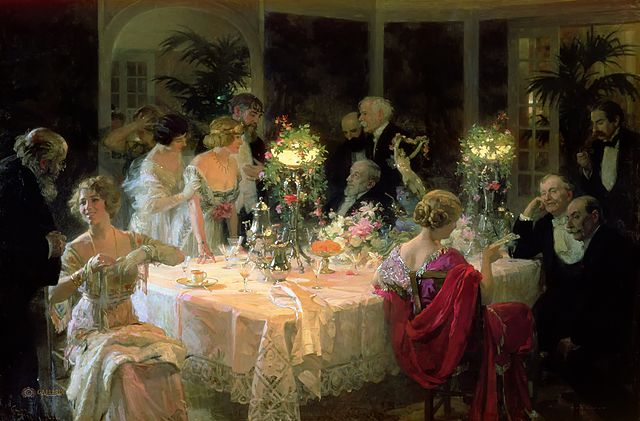
The English word civilization comes from the French civilisé ('civilized'), from Latin: civilis ('civil'), related to civis ('citizen') and civitas ('city').[14] The fundamental treatise is Norbert Elias's The Civilizing Process (1939), which traces social mores from medieval courtly society to the early modern period.[lower-alpha 1] In The Philosophy of Civilization (1923), Albert Schweitzer outlines two opinions: one purely material and the other material and ethical. He said that the world crisis was from humanity losing the ethical idea of civilization, "the sum total of all progress made by man in every sphere of action and from every point of view in so far as the progress helps towards the spiritual perfecting of individuals as the progress of all progress".[16]
Related words like "civility" developed in the mid-16th century. The abstract noun "civilization", meaning "civilized condition", came in the 1760s, again from French. The first known use in French is in 1757, by Victor de Riqueti, marquis de Mirabeau, and the first use in English is attributed to Adam Ferguson, who in his 1767 Essay on the History of Civil Society wrote, "Not only the individual advances from infancy to manhood but the species itself from rudeness to civilisation".[17] The word was therefore opposed to barbarism or rudeness, in the active pursuit of progress characteristic of the Age of Enlightenment.
In the late 1700s and early 1800s, during the French Revolution, "civilization" was used in the singular, never in the plural, and meant the progress of humanity as a whole. This is still the case in French.[18] The use of "civilizations" as a countable noun was in occasional use in the 19th century,[lower-alpha 2] but has become much more common in the later 20th century, sometimes just meaning culture (itself in origin an uncountable noun, made countable in the context of ethnography).[19] Only in this generalized sense does it become possible to speak of a "medieval civilization", which in Elias's sense would have been an oxymoron. Using the terms "civilization" and "culture" as equivalents are controversial and generally rejected so that for example some types of culture are not normally described as civilizations.[20]
Already in the 18th century, civilization was not always seen as an improvement. One historically important distinction between culture and civilization is from the writings of Rousseau, particularly his work about education, Emile. Here, civilization, being more rational and socially driven, is not fully in accord with human nature, and "human wholeness is achievable only through the recovery of or approximation to an original discursive or pre-rational natural unity" (see noble savage). From this, a new approach was developed, especially in Germany, first by Johann Gottfried Herder and later by philosophers such as Kierkegaard and Nietzsche. This sees cultures as natural organisms, not defined by "conscious, rational, deliberative acts", but a kind of pre-rational "folk spirit". Civilization, in contrast, though more rational and more successful in material progress, is unnatural and leads to "vices of social life" such as guile, hypocrisy, envy and avarice.[18] In World War II, Leo Strauss, having fled Germany, argued in New York that this opinion of civilization was behind Nazism and German militarism and nihilism.[21]
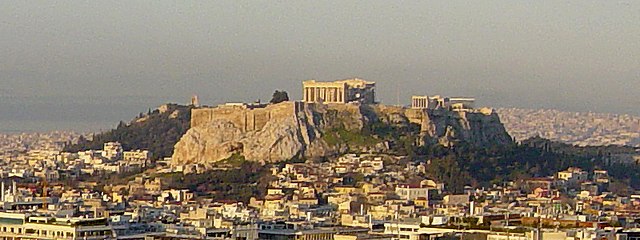
Social scientists such as V. Gordon Childe have named a number of traits that distinguish a civilization from other kinds of society.[24][25] Civilizations have been distinguished by their means of subsistence, types of livelihood, settlement patterns, forms of government, social stratification, economic systems, literacy and other cultural traits. Andrew Nikiforuk argues that "civilizations relied on shackled human muscle. It took the energy of slaves to plant crops, clothe emperors, and build cities" and considers slavery to be a common feature of pre-modern civilizations.[26]
All civilizations have depended on agriculture for subsistence, with the possible exception of some early civilizations in Peru which may have depended upon maritime resources.[27][28]
The traditional "surplus model" postulates that cereal farming results in accumulated storage and a surplus of food, particularly when people use intensive agricultural techniques such as artificial fertilization, irrigation and crop rotation. It is possible but more difficult to accumulate horticultural production, and so civilizations based on horticultural gardening have been very rare.[29] Grain surpluses have been especially important because grain can be stored for a long time.
Research from the Journal of Political Economy contradicts the surplus model. It postulates that horticultural gardening was more productive than cereal farming. However, only cereal farming produced civilization because of the appropriability of yearly harvest. Rural populations that could only grow cereals could be taxed allowing for a taxing elite and urban development. This also had a negative effect on rural population, increasing relative agricultural output per farmer. Farming efficiency created food surplus and sustained the food surplus through decreasing rural population growth in favour of urban growth. Suitability of highly productive roots and tubers was in fact a curse of plenty, which prevented the emergence of states and impeded economic development.[30][31]
A surplus of food permits some people to do things besides producing food for a living: early civilizations included soldiers, artisans, priests and priestesses, and other people with specialized careers. A surplus of food results in a division of labour and a more diverse range of human activity, a defining trait of civilizations. However, in some places hunter-gatherers have had access to food surpluses, such as among some of the indigenous peoples of the Pacific Northwest and perhaps during the Mesolithic Natufian culture. It is possible that food surpluses and relatively large scale social organization and division of labour predates plant and animal domestication.[32]
Civilizations have distinctly different settlement patterns from other societies. The word civilization is sometimes defined as "living in cities".[33] Non-farmers tend to gather in cities to work and to trade.
Compared with other societies, civilizations have a more complex political structure, namely the state.[34] State societies are more stratified[35] than other societies; there is a greater difference among the social classes. The ruling class, normally concentrated in the cities, has control over much of the surplus and exercises its will through the actions of a government or bureaucracy. Morton Fried, a conflict theorist and Elman Service, an integration theorist, have classified human cultures based on political systems and social inequality. This system of classification contains four categories.[36]
Economically, civilizations display more complex patterns of ownership and exchange than less organized societies. Living in one place allows people to accumulate more personal possessions than nomadic people. Some people also acquire landed property, or private ownership of the land. Because a percentage of people in civilizations do not grow their own food, they must trade their goods and services for food in a market system, or receive food through the levy of tribute, redistributive taxation, tariffs or tithes from the food producing segment of the population. Early human cultures functioned through a gift economy supplemented by limited barter systems. By the early Iron Age, contemporary civilizations developed money as a medium of exchange for increasingly complex transactions. In a village, the potter makes a pot for the brewer and the brewer compensates the potter by giving him a certain amount of beer. In a city, the potter may need a new roof, the roofer may need new shoes, the cobbler may need new horseshoes, the blacksmith may need a new coat and the tanner may need a new pot. These people may not be personally acquainted with one another and their needs may not occur all at the same time. A monetary system is a way of organizing these obligations to ensure that they are fulfilled. From the days of the earliest monetarized civilizations, monopolistic controls of monetary systems have benefited the social and political elites.
The transition from simpler to more complex economies does not necessarily mean an improvement in the living standards of the populace. For example, although the Middle Ages is often portrayed as an era of decline from the Roman Empire, studies have shown that the average stature of males in the Middle Ages (c. 500 to 1500 CE) was greater than it was for males during the preceding Roman Empire and the succeeding Early Modern Period (c. 1500 to 1800 CE).[39][40] Also, the Plains Indians of North America in the 19th century were taller than their "civilized" American and European counterparts. The average stature of a population is a good measurement of the adequacy of its access to necessities, especially food, and its freedom from disease.[41]
Writing, developed first by people in Sumer, is considered a hallmark of civilization and "appears to accompany the rise of complex administrative bureaucracies or the conquest state".[42] Traders and bureaucrats relied on writing to keep accurate records. Like money, the writing was necessitated by the size of the population of a city and the complexity of its commerce among people who are not all personally acquainted with each other. However, writing is not always necessary for civilization, as shown by the Inca civilization of the Andes, which did not use writing at all but except for a complex recording system consisting of knotted strings of different lengths and colors: the "Quipus", and still functioned as a civilized society.
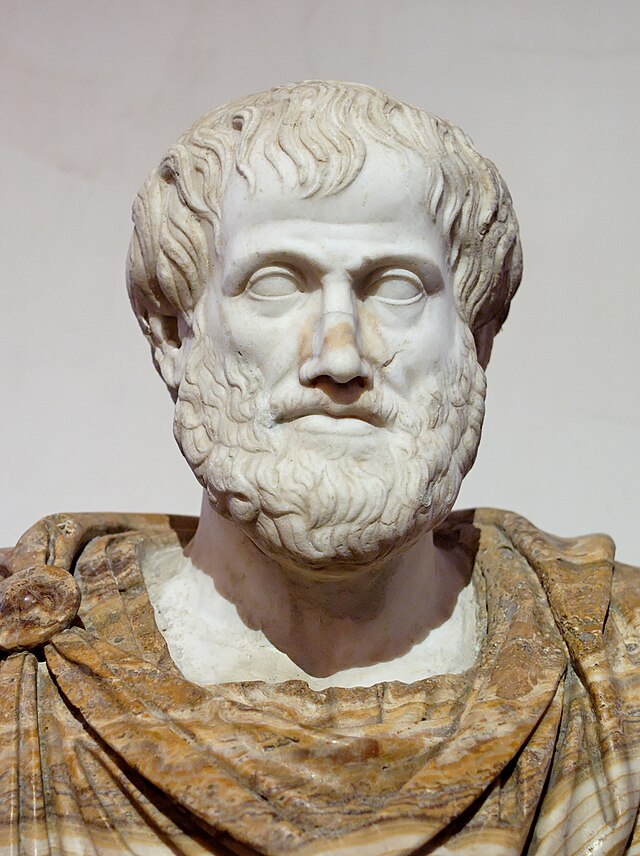
Aided by their division of labour and central government planning, civilizations have developed many other diverse cultural traits. These include organized religion, development in the arts, and countless new advances in science and technology.
Assessments of what level of civilization a polity has reached are based on comparisons of the relative importance of agricultural as opposed to trading or manufacturing capacities, the territorial extensions of its power, the complexity of its division of labour, and the carrying capacity of its urban centres. Secondary elements include a developed transportation system, writing, standardized measurement, currency, contractual and tort-based legal systems, art, architecture, mathematics, scientific understanding, metallurgy, political structures, and organized religion.
The idea of civilization implies a progression or development from a previous "uncivilized" state. Traditionally, cultures that defined themselves as "civilized" often did so in contrast to other societies or human groupings viewed as less civilized, calling the latter barbarians, savages, and primitives. Indeed, the modern Western idea of civilization developed as a contrast to the indigenous cultures European settlers encountered during the European colonization of the Americas and Australia.[43] The term "primitive," though once used in anthropology, has now been largely condemned by anthropologists because of its derogatory connotations and because it implies that the cultures it refers to are relics of a past time that do not change or progress.[44]
Because of this, societies regarding themselves as "civilized" have sometimes sought to dominate and assimilate "uncivilized" cultures into a "civilized" way of living.[45] In the 19th century, the idea of European culture as "civilized" and superior to "uncivilized" non-European cultures was fully developed, and civilization became a core part of European identity.[46] The idea of civilization can also be used as a justification for dominating another culture and dispossessing a people of their land. For example, in Australia, British settlers justified the displacement of Indigenous Australians by observing that the land appeared uncultivated and wild, which to them reflected that the inhabitants were not civilized enough to "improve" it.[43] The behaviors and modes of subsistence that characterize civilization have been spread by colonization, invasion, religious conversion, the extension of bureaucratic control and trade, and by the introduction of new technologies to cultures that did not previously have them. Though aspects of culture associated with civilization can be freely adopted through contact between cultures, since early modern times Eurocentric ideals of "civilization" have been widely imposed upon cultures through coercion and dominance. These ideals complemented a philosophy that assumed there were innate differences between "civilized" and "uncivilized" peoples.[46]
"Civilization" can also refer to the culture of a complex society, not just the society itself. Every society, civilization or not, has a specific set of ideas and customs, and a certain set of manufactures and arts that make it unique. Civilizations tend to develop intricate cultures, including a state-based decision-making apparatus, a literature, professional art, architecture, organized religion and complex customs of education, coercion and control associated with maintaining the elite.
The intricate culture associated with civilization has a tendency to spread to and influence other cultures, sometimes assimilating them into the civilization, a classic example being Chinese civilization and its influence on nearby civilizations such as Korea, Japan and Vietnam[47] Many civilizations are actually large cultural spheres containing many nations and regions. The civilization in which someone lives is that person's broadest cultural identity.[48][49]

It is precisely the protection of this cultural identity that is becoming increasingly important nationally and internationally. According to international law, the United Nations and UNESCO try to set up and enforce relevant rules. The aim is to preserve the cultural heritage of humanity and also the cultural identity, especially in the case of war and armed conflict. According to Karl von Habsburg, President of Blue Shield International, the destruction of cultural assets is also part of psychological warfare. The target of the attack is often the opponent's cultural identity, which is why symbolic cultural assets become a main target. It is also intended to destroy the particularly sensitive cultural memory (museums, archives, monuments, etc.), the grown cultural diversity, and the economic basis (such as tourism) of a state, region or community.[50][51][52][53][54][55]
Many historians have focused on these broad cultural spheres and have treated civilizations as discrete units. Early twentieth-century philosopher Oswald Spengler,[56] uses the German word Kultur, "culture", for what many call a "civilization". Spengler believed a civilization's coherence is based on a single primary cultural symbol. Cultures experience cycles of birth, life, decline, and death, often supplanted by a potent new culture, formed around a compelling new cultural symbol. Spengler states civilization is the beginning of the decline of a culture as "the most external and artificial states of which a species of developed humanity is capable".[56]
This "unified culture" concept of civilization also influenced the theories of historian Arnold J. Toynbee in the mid-twentieth century. Toynbee explored civilization processes in his multi-volume A Study of History, which traced the rise and, in most cases, the decline of 21 civilizations and five "arrested civilizations". Civilizations generally declined and fell, according to Toynbee, because of the failure of a "creative minority", through moral or religious decline, to meet some important challenge, rather than mere economic or environmental causes.
Samuel P. Huntington defines civilization as "the highest cultural grouping of people and the broadest level of cultural identity people have short of that which distinguishes humans from other species".[48]

Another group of theorists, making use of systems theory, looks at a civilization as a complex system, i.e., a framework by which a group of objects can be analysed that work in concert to produce some result. Civilizations can be seen as networks of cities that emerge from pre-urban cultures and are defined by the economic, political, military, diplomatic, social and cultural interactions among them. Any organization is a complex social system and a civilization is a large organization. Systems theory helps guard against superficial and misleading analogies in the study and description of civilizations.
Systems theorists look at many types of relations between cities, including economic relations, cultural exchanges and political/diplomatic/military relations. These spheres often occur on different scales. For example, trade networks were, until the nineteenth century, much larger than either cultural spheres or political spheres. Extensive trade routes, including the Silk Road through Central Asia and Indian Ocean sea routes linking the Roman Empire, Persian Empire, India and China, were well established 2000 years ago when these civilizations scarcely shared any political, diplomatic, military, or cultural relations. The first evidence of such long-distance trade is in the ancient world. During the Uruk period, Guillermo Algaze has argued that trade relations connected Egypt, Mesopotamia, Iran and Afghanistan.[57] Resin found later in the Royal Cemetery at Ur is suggested was traded northwards from Mozambique.
Many theorists argue that the entire world has already become integrated into a single "world system", a process known as globalization. Different civilizations and societies all over the globe are economically, politically, and even culturally interdependent in many ways. There is debate over when this integration began, and what sort of integration – cultural, technological, economic, political, or military-diplomatic – is the key indicator in determining the extent of a civilization. David Wilkinson has proposed that economic and military-diplomatic integration of the Mesopotamian and Egyptian civilizations resulted in the creation of what he calls the "Central Civilization" around 1500 BCE.[58] Central Civilization later expanded to include the entire Middle East and Europe, and then expanded to a global scale with European colonization, integrating the Americas, Australia, China and Japan by the nineteenth century. According to Wilkinson, civilizations can be culturally heterogeneous, like the Central Civilization, or homogeneous, like the Japanese civilization. What Huntington calls the "clash of civilizations" might be characterized by Wilkinson as a clash of cultural spheres within a single global civilization. Others point to the Crusading movement as the first step in globalization. The more conventional viewpoint is that networks of societies have expanded and shrunk since ancient times, and that the current globalized economy and culture is a product of recent European colonialism.[citation needed]
The notion of human history as a succession of "civilizations" is an entirely modern one. In the European Age of Discovery, emerging Modernity was put into stark contrast with the Neolithic and Mesolithic stage of the cultures of many of the peoples they encountered.[59][obsolete source] Nonetheless, developments in the Neolithic stage, such as agriculture and sedentary settlement, were critical to the development of modern conceptions of civilization.[60][61]
The Natufian culture in the Levantine corridor provides the earliest case of a Neolithic Revolution, with the planting of cereal crops attested from c. 11,000 BCE.[62][63] The earliest neolithic technology and lifestyle were established first in Western Asia (for example at Göbekli Tepe, from about 9,130 BCE), later in the Yellow River and Yangtze basins in China (for example the Peiligang and Pengtoushan cultures), and from these cores spread across Eurasia. Mesopotamia is the site of the earliest civilizations developing from 7,400 years ago. This area has been evaluated by Beverley Milton-Edwards as having "inspired some of the most important developments in human history including the invention of the wheel, the building of the earliest cities and the development of written cursive script".[64] Similar pre-civilized "neolithic revolutions" also began independently from 7,000 BCE in northwestern South America (the Caral-Supe civilization)[65] and in Mesoamerica.[66] The Black Sea area served as a cradle of European civilization. The site of Solnitsata – a prehistoric fortified (walled) stone settlement (prehistoric city) (5500–4200 BCE) – is believed by some archaeologists to be the oldest known town in present-day Europe.[67][68][69][70]
The 8.2 Kiloyear Arid Event and the 5.9 Kiloyear Inter-pluvial saw the drying out of semiarid regions and a major spread of deserts.[71] This climate change shifted the cost-benefit ratio of endemic violence between communities, which saw the abandonment of unwalled village communities and the appearance of walled cities, seen by some as a characteristic of early civilizations.[72]

This "urban revolution"—a term introduced by Childe in the 1930s—from the 4th millennium BCE,[73] marked the beginning of the accumulation of transferable economic surpluses, which helped economies and cities develop. Urban revolutions were associated with the state monopoly of violence, the appearance of a warrior, or soldier, class and endemic warfare (a state of continual or frequent warfare), the rapid development of hierarchies, and the use of human sacrifice.[74][75]
The civilized urban revolution in turn was dependent upon the development of sedentism, the domestication of grains, plants and animals, the permanence of settlements and development of lifestyles that facilitated economies of scale and accumulation of surplus production by particular social sectors. The transition from complex cultures to civilizations, while still disputed, seems to be associated with the development of state structures, in which power was further monopolized by an elite ruling class[76] who practiced human sacrifice.[77]
Towards the end of the Neolithic period, various elitist Chalcolithic civilizations began to rise in various "cradles" from around 3600 BCE beginning with Mesopotamia, expanding into large-scale kingdoms and empires in the course of the Bronze Age (Akkadian Empire, Indus Valley Civilization, Old Kingdom of Egypt, Neo-Sumerian Empire, Middle Assyrian Empire, Babylonian Empire, Hittite Empire, and to some degree the territorial expansions of the Elamites, Hurrians, Amorites and Ebla).
Outside the Old World, development took place independently in the Pre-Columbian Americas. Urbanization in the Caral-Supe civilization in coastal Peru began about 3500 BCE.[78] In North America, the Olmec civilization emerged about 1200 BCE; the oldest known Mayan city, located in Guatemala, dates to about 750 BCE.[79] and Teotihuacan in Mexico was one of the largest cities in the world in 350 CE, with a population of about 125,000.[80]
The Bronze Age collapse was followed by the Iron Age around 1200 BCE, during which a number of new civilizations emerged, culminating in a period from the 8th to the 3rd century BCE which Karl Jaspers termed the Axial Age, presented as a critical transitional phase leading to classical civilization.[81]
A major technological and cultural transition to modernity began approximately 1500 CE in Western Europe, and from this beginning new approaches to science and law spread rapidly around the world, incorporating earlier cultures into the technological and industrial society of the present.[77][82]
Civilizations are traditionally understood as ending in one of two ways; either through incorporation into another expanding civilization (e.g. as Ancient Egypt was incorporated into Hellenistic Greek, and subsequently Roman civilizations), or by collapsing and reverting to a simpler form of living, as happens in so-called Dark Ages.[83]
There have been many explanations put forward for the collapse of civilization. Some focus on historical examples, and others on general theory.
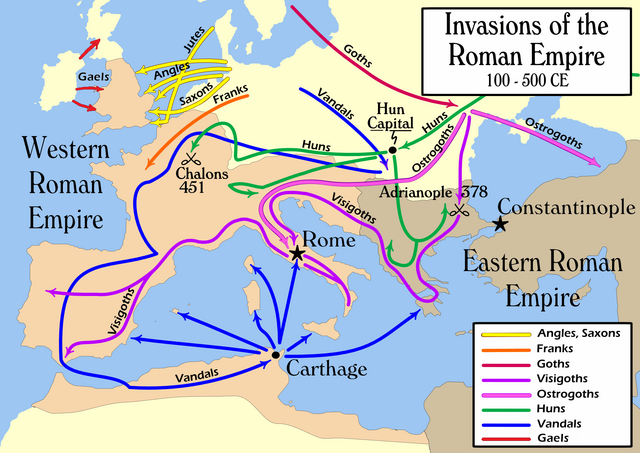
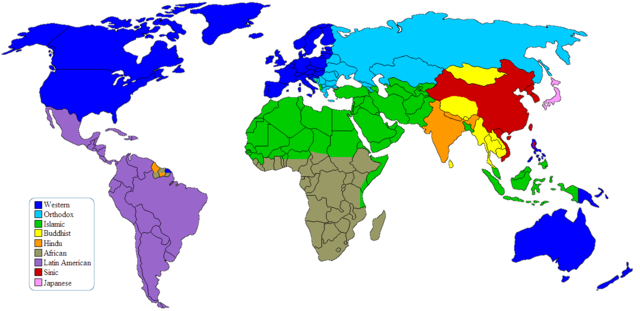
According to political scientist Samuel P. Huntington, the 21st century will be characterized by a clash of civilizations,[48] which he believes will replace the conflicts between nation-states and ideologies that were prominent in the 19th and 20th centuries. However, this viewpoint been strongly challenged by others such as Edward Said, Muhammed Asadi and Amartya Sen.[94] Ronald Inglehart and Pippa Norris have argued that the "true clash of civilizations" between the Muslim world and the West is caused by the Muslim rejection of the West's more liberal sexual values, rather than a difference in political ideology, although they note that this lack of tolerance is likely to lead to an eventual rejection of (true) democracy.[95] In Identity and Violence Sen questions if people should be divided along the lines of a supposed "civilization", defined by religion and culture only. He argues that this ignores the many others identities that make up people and leads to a focus on differences.
Cultural Historian Morris Berman argues in Dark Ages America: the End of Empire that in the corporate consumerist United States, the very factors that once propelled it to greatness―extreme individualism, territorial and economic expansion, and the pursuit of material wealth―have pushed the United States across a critical threshold where collapse is inevitable. Politically associated with over-reach, and as a result of the environmental exhaustion and polarization of wealth between rich and poor, he concludes the current system is fast arriving at a situation where continuation of the existing system saddled with huge deficits and a hollowed-out economy is physically, socially, economically and politically impossible.[96] Although developed in much more depth, Berman's thesis is similar in some ways to that of Urban Planner, Jane Jacobs who argues that the five pillars of United States culture are in serious decay: community and family; higher education; the effective practice of science; taxation and government; and the self-regulation of the learned professions. The corrosion of these pillars, Jacobs argues, is linked to societal ills such as environmental crisis, racism and the growing gulf between rich and poor.[97]
Cultural critic and author Derrick Jensen argues that modern civilization is directed towards the domination of the environment and humanity itself in an intrinsically harmful, unsustainable, and self-destructive fashion.[98] Defending his definition both linguistically and historically, he defines civilization as "a culture... that both leads to and emerges from the growth of cities", with "cities" defined as "people living more or less permanently in one place in densities high enough to require the routine importation of food and other necessities of life".[99] This need for civilizations to import ever more resources, he argues, stems from their over-exploitation and diminution of their own local resources. Therefore, civilizations inherently adopt imperialist and expansionist policies and, to maintain these, highly militarized, hierarchically structured, and coercion-based cultures and lifestyles.
The Kardashev scale classifies civilizations based on their level of technological advancement, specifically measured by the amount of energy a civilization is able to harness. The scale is only hypothetical, but it puts energy consumption in a cosmic perspective. The Kardashev scale makes provisions for civilizations far more technologically advanced than any currently known to exist.
The current scientific consensus is that human beings are the only animal species with the cognitive ability to create civilizations that has emerged on Earth. A recent thought experiment, the silurian hypothesis, however, considers whether it would "be possible to detect an industrial civilization in the geological record" given the paucity of geological information about eras before the quaternary.[100]
Astronomers speculate about the existence of communicating intelligent civilizations within and beyond the Milky Way galaxy, usually using variants of the Drake equation.[101] They conduct searches for such intelligences – such as for technological traces, called "technosignatures".[102] The proposed proto-scientific field "xenoarchaeology" is concerned with the study of artifact remains of non-human civilizations to reconstruct and interpret past lives of alien societies if such get discovered and confirmed scientifically.[103][104]
Seamless Wikipedia browsing. On steroids.
Every time you click a link to Wikipedia, Wiktionary or Wikiquote in your browser's search results, it will show the modern Wikiwand interface.
Wikiwand extension is a five stars, simple, with minimum permission required to keep your browsing private, safe and transparent.